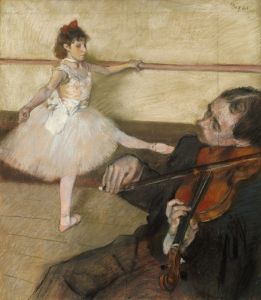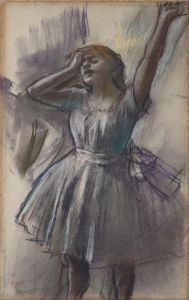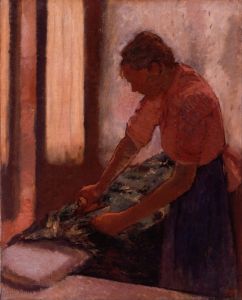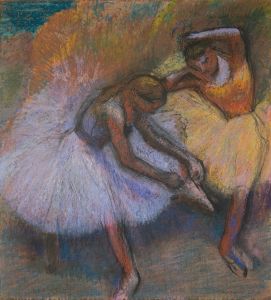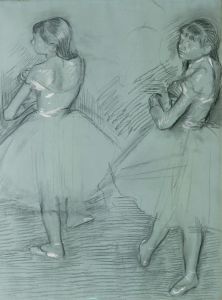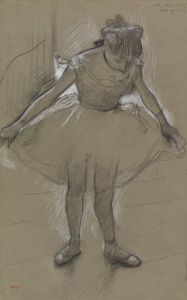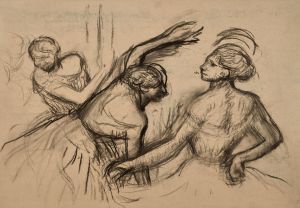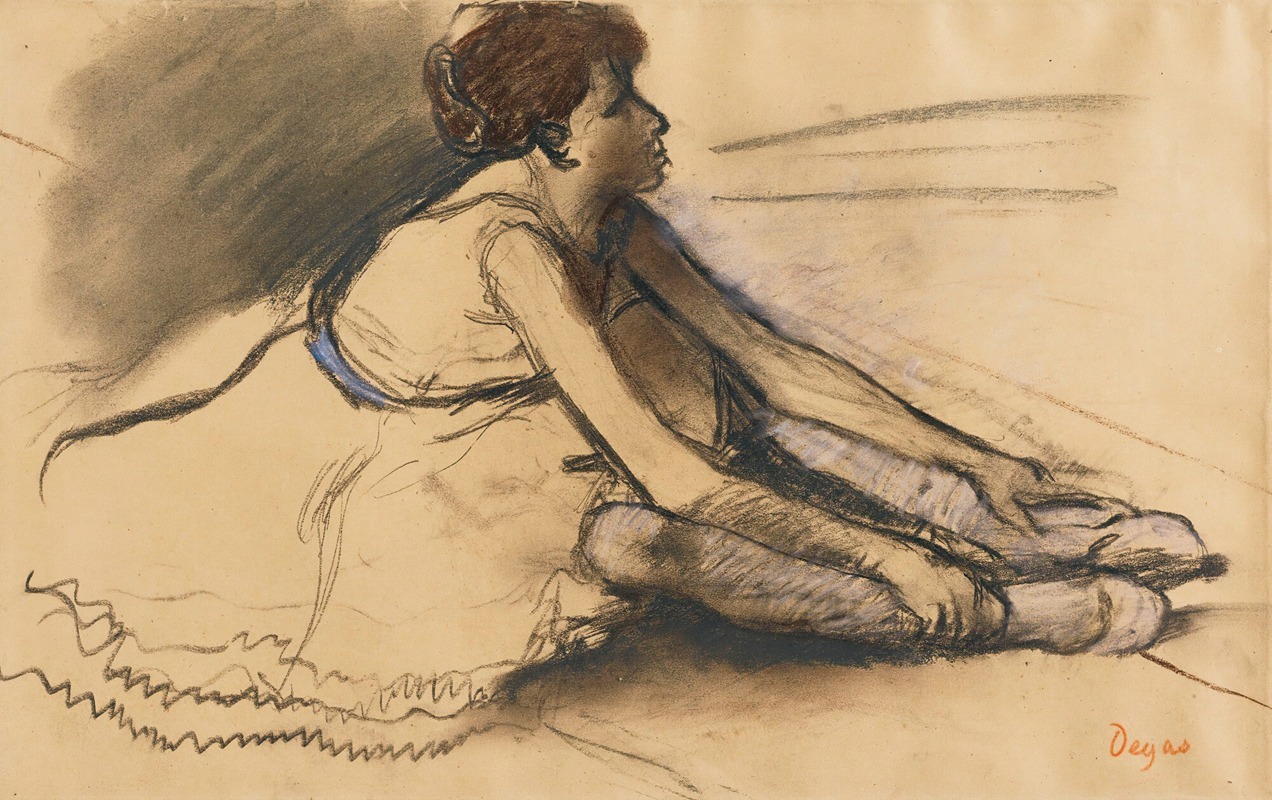
Le Repos De La Danseuse
A hand-painted replica of Edgar Degas’s masterpiece Le Repos De La Danseuse, meticulously crafted by professional artists to capture the true essence of the original. Each piece is created with museum-quality canvas and rare mineral pigments, carefully painted by experienced artists with delicate brushstrokes and rich, layered colors to perfectly recreate the texture of the original artwork. Unlike machine-printed reproductions, this hand-painted version brings the painting to life, infused with the artist’s emotions and skill in every stroke. Whether for personal collection or home decoration, it instantly elevates the artistic atmosphere of any space.
Edgar Degas, a prominent French artist associated with the Impressionist movement, is renowned for his depictions of dancers, capturing the grace and dynamism of ballet. One of his works, "Le Repos De La Danseuse" (translated as "The Dancer's Rest"), exemplifies his fascination with the world of dance and his innovative approach to composition and form.
Degas was born in Paris in 1834 and developed a keen interest in art from a young age. He studied at the École des Beaux-Arts and spent time in Italy, where he was influenced by the classical tradition. However, it was his association with the Impressionists in the late 19th century that marked a significant shift in his artistic style. Unlike many of his contemporaries, Degas preferred to work indoors, focusing on scenes of modern life, particularly those involving the ballet.
"Le Repos De La Danseuse" is one of many works by Degas that explores the theme of dance. While specific details about this particular painting are scarce, it is consistent with Degas' broader body of work, which often portrays dancers in moments of rest or preparation, rather than in performance. This approach allows viewers to glimpse the behind-the-scenes reality of a dancer's life, emphasizing the physical demands and moments of respite that are part of their routine.
Degas' technique in depicting dancers is notable for its use of unusual perspectives and compositions. He often employed a cropped framing, influenced by the advent of photography, which was gaining popularity during his lifetime. This technique gives his works a sense of immediacy and intimacy, drawing the viewer into the scene. His use of pastel, a medium he favored later in his career, allowed him to capture the delicate textures of tutus and the subtle play of light on the dancers' skin.
In "Le Repos De La Danseuse," as in many of his works, Degas' attention to detail and his ability to convey the nuances of human posture and expression are evident. The painting likely features a dancer in a moment of rest, possibly seated or reclining, capturing the tranquility and exhaustion that follow a rigorous practice or performance. Degas' dancers are often depicted with a sense of realism that contrasts with the idealized images of dancers typically seen on stage.
Degas' fascination with dance was not merely aesthetic; it also reflected his interest in movement and the human form. His works often explore the tension between the elegance of dance and the physical effort it requires. This duality is a recurring theme in his art, offering a more comprehensive view of the life of a dancer.
Throughout his career, Degas produced numerous paintings, drawings, and sculptures of dancers, making them one of the most significant subjects of his oeuvre. His works have been celebrated for their innovative approach and their ability to capture the ephemeral beauty of dance. "Le Repos De La Danseuse," while not as widely known as some of his other pieces, fits within this context, contributing to our understanding of Degas' artistic legacy and his enduring fascination with the world of ballet.
Degas' influence extends beyond his lifetime, as his works continue to be studied and admired for their technical mastery and insightful portrayal of modern life. His contributions to the art world, particularly his depictions of dancers, remain a testament to his skill and vision as an artist.








